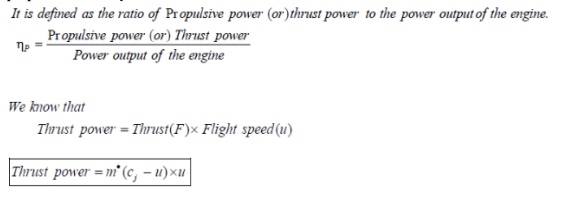Chapter: Mechanical : Gas Dynamics and Jet Propulsion : Space Propulsion
Overall rocket engine performance and Effective Speed Ratio
Overall rocket engine
performance
Rocket technology can combine very high thrust
(meganewtons), very high exhaust speeds (around 10 times the speed of sound in
air at sea level) and very high thrust/weight ratios (>100) simultaneously
as well as being able to operate outside the atmosphere, and while permitting
the use of low pressure and hence lightweight tanks and structure.
Rockets can be further optimised to even more
extreme performance along one or more of these axes at the expense of the others.
Specific impulse:
The most important metric for the efficiency of a
rocket engine is impulse per unit of propellant, this is called specific
impulse (usually written Isp). This is either measured as a speed (the
effective exhaust velocity Ve in metres/second or ft/s) or as a time (seconds).
An engine that gives a large specific impulse is
normally highly desirable. The specific impulse that can be achieved is
primarily a function of the propellant mix (and ultimately would limit the
specific impulse), but practical limits on chamber pressures and the nozzle
expansion ratios reduce the performance that can be achieved. Space flight:
Spaceflight is the act of travelling into or through outer space. Spaceflight
can occur with spacecraft which may, or may not, have humans on board. Examples
of human spaceflight include the Russian Soyuz program, the U.S. Space shuttle
program, as well as the ongoing International Space Station. Examples of
unmanned spaceflight include space probes which leave Earth's orbit, as well as
satellites in orbit around Earth, such as communication satellites.
Effective Speed Ratio

Thrust Specific Fuel
Consumption (TSFC)
The fuel consumption rate per unit thrust is known
as Thrust Specific Fuel Consumption

Specific Impulse (Isp
)
The thrust developed
per unit weight flow rate is
known as specific impulse

propulsive efficiency:

At the outlet of the engine , the power is

Thermal Efficiency
It is defined as the ratio of power output of the
engine to the power input to the engine.

Where,
m Mass of
air fuel mixture
c j Velocity
of jet
u Flight
velocity
fuel
m
f Mass of
C V Calorific
value of fuel
If efficiency of combustion is considered ,
Overall Efficiency
It is defined as the
ratio of propulsive power to the power input to the engine.

Related Topics